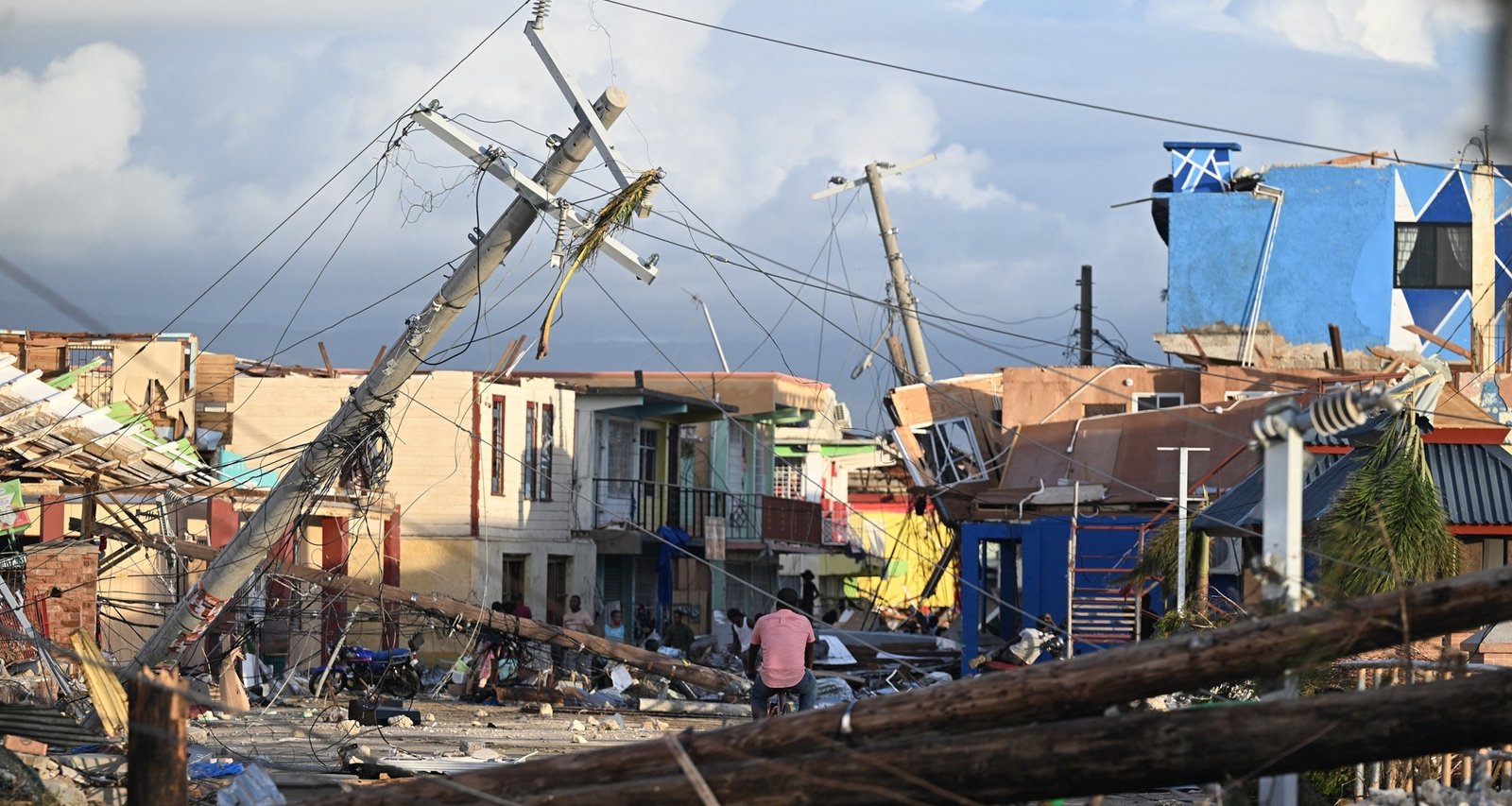Field assessments remain challenging. Downed trees, flood-damaged bridges and widespread debris have cut off roads, leaving numerous districts isolated. Rescue personnel have relied on boats and heavy equipment to reach neighborhoods where communications were lost immediately after the hurricane’s passage.
Power restoration efforts are also under way. Jamaica Public Service, the national electricity provider, reported Friday morning that approximately 462,000 customers—roughly two-thirds of its base—were still without service. Crews are replacing toppled utility poles, restringing lines and clearing blocked access routes, but engineers warned that full restoration could take days in urban centers and considerably longer in rural areas.
Emergency supplies began arriving as early as Thursday. According to Minister of Science, Energy, Telecommunications and Transport Daryl Vaz, 13 cargo flights touched down at Kingston’s Norman Manley International Airport carrying food, water, medical provisions and temporary shelter materials. More than 20 additional flights were expected Friday, and the government is coordinating distribution to all parishes from central warehouses near the capital.
Medical evacuations are being prioritized. Vaz confirmed that between eight and 10 United States government helicopters equipped for patient airlifts are en route. The aircraft will be deployed to regions where hospital facilities suffered structural damage or remain inaccessible by road, ensuring that critically injured residents reach operating theaters equipped to provide advanced trauma care.
While official damage assessments have yet to conclude, early aerial surveys show extensive losses in agriculture, housing and public works. Large sections of coastal infrastructure, including fishing piers and tourist facilities, were either washed away or rendered inoperative by storm surge. Preliminary estimates from local disaster agencies suggest that full economic impacts will exceed initial projections once comprehensive evaluations are completed.
International support has expanded rapidly. Neighboring Caribbean governments, non-governmental organizations and private sector partners have pledged additional relief supplies and technical assistance. Jamaica’s leadership has publicly thanked donor nations for what it described as overwhelming aid, emphasizing that foreign expertise in logistics, engineering and public health will be essential to long-term recovery.

Imagem: Internet
Weather forecasters note that Melissa weakened after crossing Jamaica and moving into the western Caribbean, but the storm’s record-setting intensity at landfall drew global attention. For data on storm classification and historical comparisons, meteorologists often reference information maintained by the National Hurricane Center, which classifies hurricanes based on sustained wind speeds using the Saffir-Simpson scale.
With the immediate rescue phase still under way, authorities are urging residents in affected zones to remain in designated shelters until infrastructure and public services stabilize. The Office of Disaster Preparedness and Emergency Management continues to broadcast safety advisories and coordinates with parish councils to monitor food security, sanitation and water quality.
Officials reiterated that verifying casualties is a complex, meticulous process involving pathologists, law enforcement and local registrars. Confirmation can be delayed when bodies are discovered in remote or flooded locations and must be transported for formal identification. Consequently, the death toll, presently at 19, is likely to change as teams gain access to areas that remained cut off through much of the week.
As conditions improve, damage inspectors, insurance assessors and humanitarian organizations will begin detailed evaluations of housing stock, agricultural output and public infrastructure. Reconstruction priorities include restoring electricity, reopening schools and hospitals, and rebuilding major road networks to reconnect island commerce.
In the interim, government ministries are emphasizing transparency and coordination, pledging to release updated fatality figures and damage estimates as soon as verification processes conclude and remote communities are reached.
Crédito da imagem: Ricardo Makyn/AFP via Getty Images



